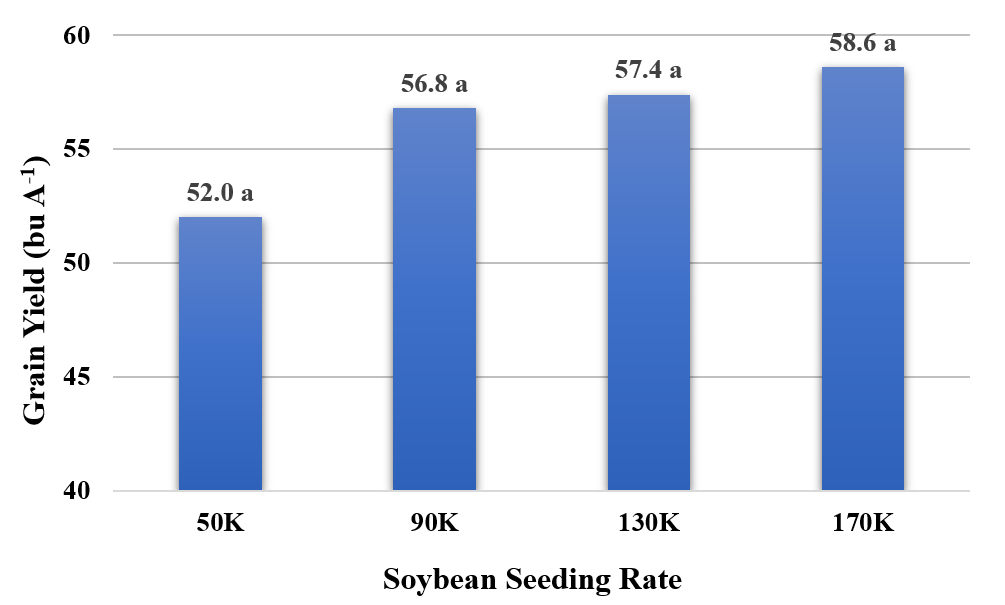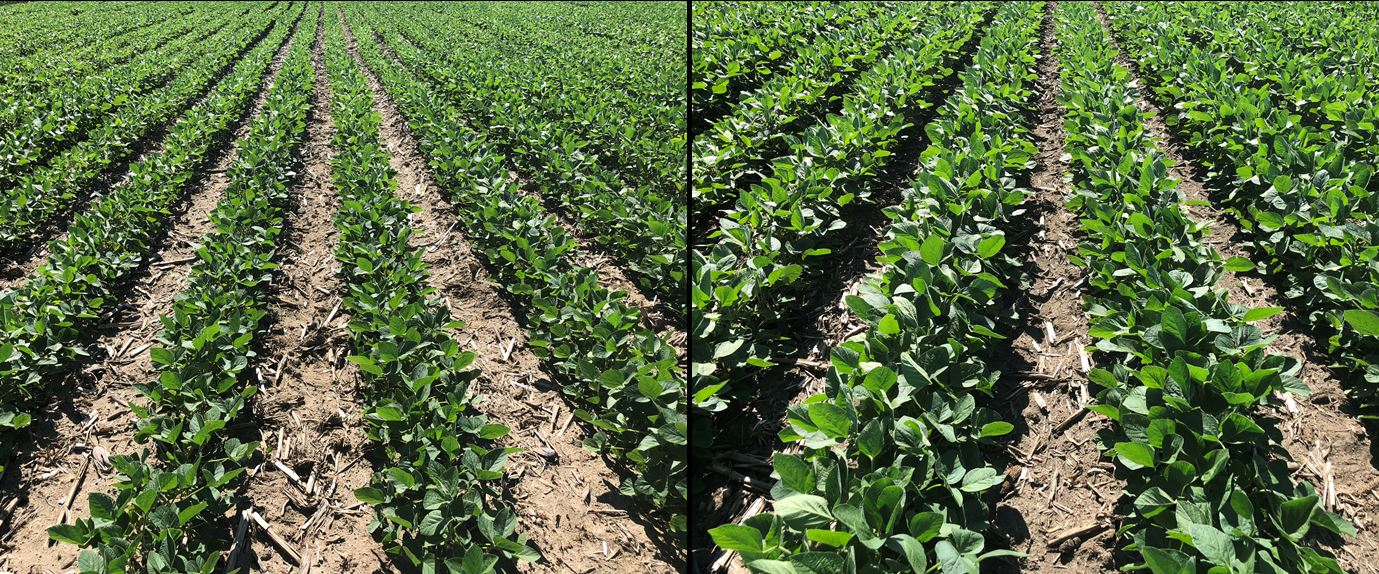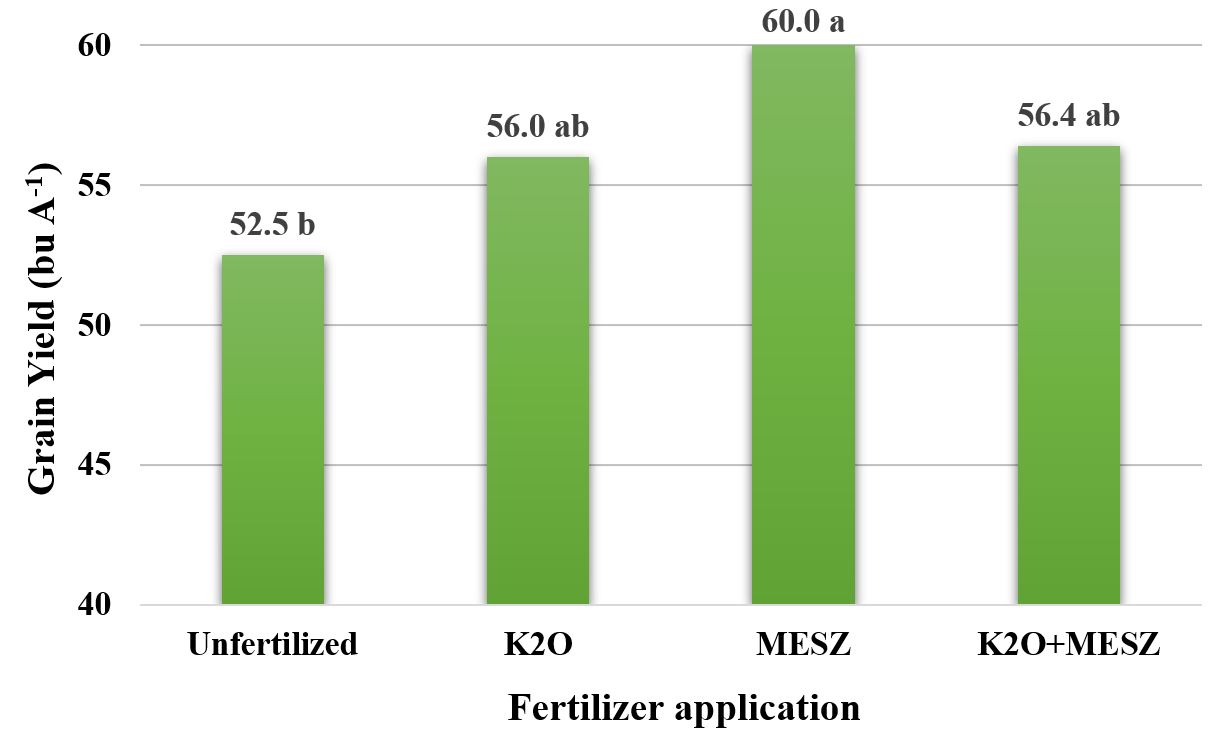Taking a closer look at soybean nutrient applications
Can seeding rates influence the likelihood of a nutrient response?

Soybean grain yield improvements over the last several decades have largely come from greater biomass production. Nutrient management programs can become especially challenging as soybeans often meet nitrogen (N) needs from biological fixation without requiring supplemental nitrogen applications. Soil test values for other nutrients including phosphorus (P), potassium (K) and many of the micronutrients when at or near critical soil test values (i.e., the point where grain yield achieves 95 to 97 percent of maximum) create difficulties in developing cost-effective, plant-responsive and widely applicable nutrient management programs. However, management factors including below currently recommended seeding rates have produced comparable grain yields to greater planting densities and have simultaneously altered the morphology or the shape of the plant through increased biomass production which often stimulates additional nutrient uptake and accumulation. Can growers manipulate soybean planting populations to stimulate or prompt a greater response to nutrient additions?
Greater seeding rates have increased grain yield potential in modern soybean varieties, but interplant competition may limit yield and soybean response to nutrient applications. Reduced seeding rates may maximize yield potential of individual plants by increasing biomass on a per plant basis while simultaneously stimulating greater nutrient uptake (Fig. 1). As soybean commodity prices are forecast to remain stagnant, growers may want to identify areas to focus their nutrient investment dollars as opposed to simply fertilizing for greater yield. The Michigan Soybean Promotion Committee supported multi-year research trials to better understand the response of soybean grain yield to fertilizer applications at multiple seeding rates. Soybeans were planted in 30-inch rows at seeding rates of 50,000, 90,000, 130,000 and 170,000 seeds per acre. Fertilizer additions were applied within each seeding rate and included:
- A non-fertilized control.
- 50 pounds K2O per acre broadcast and incorporated prior to planting (PPI).
- 150 pounds MESZ (12-40-0-10S-1Zn) per acre applied 2 inches below and to the side of the seed (2x2).
- K2O PPI and MESZ applied 2x2 at the respective application rates.

Seeding rate and fertilizer application did not interact to influence soybean grain yield. Averaged across fertilizer treatments, grain yield was not significantly affected by the four seeding rates in 2018 and ranged between 52.0 to 58.6 bu A-1 (Fig. 2). Soybean has a strong plasticity response or compensation ability at reduced seeding rates to increase leaf area per plant. The greater biomass and pod production at the reduced seeding rates offset the fewer number of plants per unit area thus eliminating grain yield differences between seeding rates. However disadvantages to reduced seeding rates need to be considered, including:
- Emergence issues and delays from soil crusting due to fewer plants per unit area pushing up through the soil.
- Greater pod production may increase the number of sinks competing for available water and nutrients contributing to grain yield reductions during dry conditions.
- Additional pod formation close to the soil surface may increase harvest difficulties or losses at reduced seeding rates (i.e., 50,000 seeds A-1).

Plant growth and grain yield responses to K2O nutrient applications were not observed likely due to sufficient soil test K concentrations. Response to nutrient applications are less likely when soil test values are above critical levels. Increased grain yield (7.5 bu A-1), early-season growth, nutrient accumulation and canopy coverage were observed with MESZ applications. Despite grain yield differences, no profit differences were observed among fertilizer applications due both product and application costs.
Subsurface starter nutrient applications may allow plants the ability to capitalize on mid- to late-season environmental variability (e.g., wet or dry soil conditions). Although unpredictable weather patterns will continue to emphasize the importance of “starting right to finish well,” crop responsiveness or likelihood to respond to a specific nutrient in conjunction with soil test values may dictate grain yield response to starter fertilizer applications.

Growers may view yield reductions as a greater risk factor than profit loss and become hesitant in altering management practices that can affect overall yield potentials. Data from this study suggested growers have the potential to reduce seeding rates without sacrificing yield but incremental reductions are first suggested. Additionally, subsurface MESZ applications increased early-season plant growth which may have maintained yield potential and translated into a positive grain yield response. However, 2018 results suggest fertilizer applications may not always increase profitability and emphasize the importance of considering soil nutrient concentrations and potential yield improvements when deliberating between fertilizer management strategies. Grain yield responses are dependent on soil nutrient concentrations and environmental conditions and current data continue to support the need to justify fertilizer applications (i.e., IPM approach) to maintain profitability. Studies will continue in 2019.
For additional information on this research trial and others, please visit the MSU Soil Fertility Research website and view our online video updates.



 Print
Print Email
Email